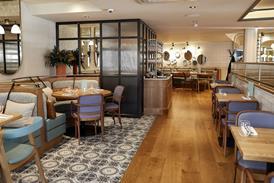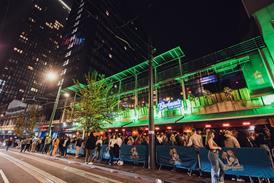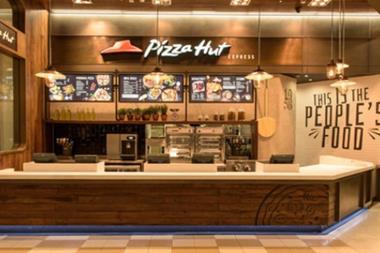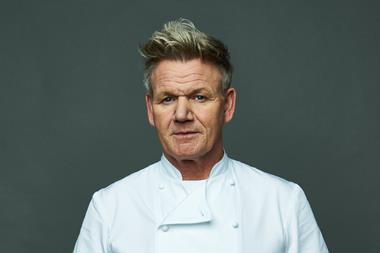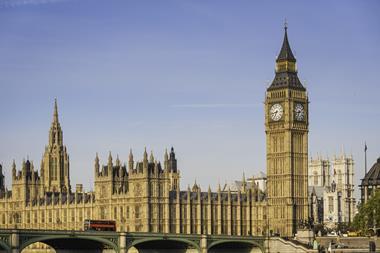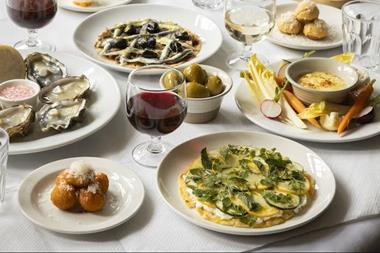Raphael Miolane became chief executive of Pizza Hut’s delivery arm at the start of the year. He talks to James Wallin about how to breathe new life into a high-street staple, the company’s fledgling Express format and how technology has become the company’s first port of call for the customer.
When Raphael Miolane sums up the journey of Pizza Hut to 2012 he describes it as “a rockstar of the whole company that became its worst nightmare”.
It was at that point that parent company YUM! Brands sold the restaurant side of the business to Rutland Partners and created a business model which Miolane admits “can seem quite complicated from the outside but is really just different pillars supporting the same brand”.
Miolane took on the role of chief executive of Pizza Hut UK & Ireland in January – responsible for the overall brand and for the operation of the delivery side – and says he is energised by the potential he sees across all areas of the business.
Miolane has worked his way up from the dining room to the boardroom, starting as a waiter at restaurants in Ireland before getting a job with Proctor & Gamble where he worked on accounts ranging from Sunny Delight to Wella Hair Care. He joined YUM! in 2009 as finance director for KFC France & Spain and developed a strong working relationship with Ivan Schofield, who was to become managing director for the brand across western Europe and was recently appointed chief executive of Ed’s Easy Diner.
In 2013 he be-came what he des-cribes as “a very senior general manager” responsible for KFC in central and eastern Europe before taking on his current role this year.
Opening up possibilities
His enthusiasm both for the brand and his new stomping ground is palpable.
On the UK, he says: “In general there is a much more advanced structure of business and service in this country. That opens up a lot of possibilities but also means expectations are much higher and you will be judged harshly if you don’t meet those.
“British people are not afraid of technology so that ball is rolling even faster here than elsewhere and we have to keep up. That’s why we have done a lot of work on our website because while it was a very bold decision to invest in a big online presence a few years ago, now others have caught up and we have to take several steps forward.”
Miolane says that when he came into the company he stopped around 40% of the
live projects to focus on key priorities – one of the biggest being the company’s re-sponse to digital advances.
He says: “Things have moved faster than anyone can really comprehend in the way we interact with technology and for a big company it takes time to adapt. An example of where we have had to change some mindsets is on complaints. We have to have a system in place to deal with complaints immediately and effectively, because if you make people wait then you give them the opportunity to go on to social media and complain to everyone. If you deal with it the right way you turn that potential detractor into an advocate of the brand.
“We are constantly improving the way we talk to people through technology because now it is very often people’s first contact with the business. They get their first impression through the website or the app and when they communicate with the company it is likely to be through social media. For many, the driver is their only direct human interaction with the company.”
Working in every channel
Miolane says his relationship with his counterpart on the restaurant side, Jens Hofma, is crucial to the brand. “Jens has done a fantastic job” he says. “He has taken something that was really going backwards and he has pointed it in the right direction. Now we are working together to grow Pizza Hut in every channel.
“We are a really unique business because we are feeding people in restaurants, in their homes and on the go. In the past maybe too much time has been spent trying to think about all of those at once but we have to respect that people have different needs in different situations.”
On the growth potential for the business over the next few years, Miolane says: “We should be at 700 Huts across the business by the end of this year and I can see 1,000 over the next five years. In Delivery we will be up to 100 sites by the end of the year and each one is in like-for-like growth.”
Another area of focus is the fledgling Pizza Hut Express food-on-the-go concept, which currently has 10 units across the UK but Miolane thinks has the potential to grow to over 100. He has set up a dedicated team to look at the prospects for the brand, which he expects to report back in 2016.
He says: “There is a lot of work for the team to do because across the world we probably have 12 versions of the Express format – from convenience on the go in the traditional transport hubs to the airport offer which tends to be a bit more stationary, and different versions for shopping malls, motorway service stations and a lot more. Of these there are certainly three or four that could work in the UK.
“For me, if I’m going after something, I will not target anything lower than 50 and my instincts tell me that triple digit should be the right level of ambition.”
Confident about potential
Miolane says that if his team found the Express format did not suit the UK & Ireland market he would move away from it but said he was confident there was the potential. “But what I see now is that if we can make $12m in one unit in Brazil and have been able to open about 50 per annum across the world, then there’s a place for me to do more,” he said. “I won’t expect something from that team earlier than 2016 because they have to look at what works in different locations and for different people – personal pizzas, by the slice, etc.”
The company is also rolling out new designs across its Delivery stores, which Miolane insists goes to the heart of what he wants to do with the brand. He says: “I want Pizza Hut to look and feel like it is a brand for the future not just a familiar face that is too easy to ignore.”










